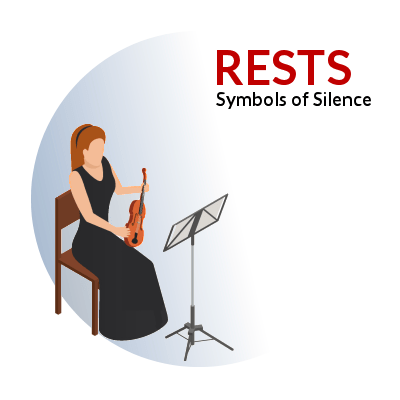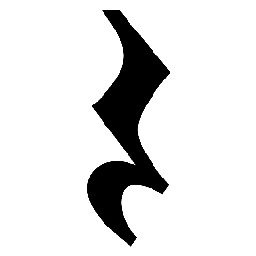
We've learned the symbols of musical sound and begun a new composition. Next we continue with the symbols of silence, rests. Like notes, rests are placed on the lines and spaces of the staff to tell the performer when to remain silent and for how long. How long a rest will last depends upon several factors such as the rest's actual time value, the time-signature, and the tempo. The musician must mentally maintain a count of the beat to properly determine the rest's actual duration. Keeping time is mandatory as well as keeping an eye on the conductor for any instructions as you go along.
Like notes, some rests will carry a stem or a stem with flags. Both the stem and the flags tell the musician the time value of the rests. Unlike notes, rests are never connected together with beams. Whole-rests, half-rests, quarter rests, and multi-rests do not require flags, any shorter rests will. Each flag on a rest cuts it's time value in half. For example, an eighth-rest with one flag becomes a sixteenth-rest with two flags, a thirty-second-rest with three and so forth.

Below are the Rests used in musical composing for your review. Add some rests to the staff we started earlier and practice in the same manner as we did notes, stopping and timing the rests accordingly until you are familiar with identifying and timing them. This will make it easier for you when reading a score or piece of music later.













